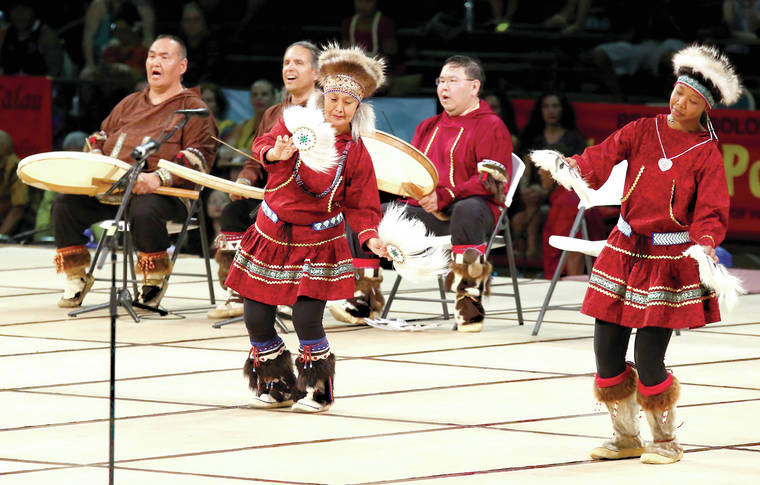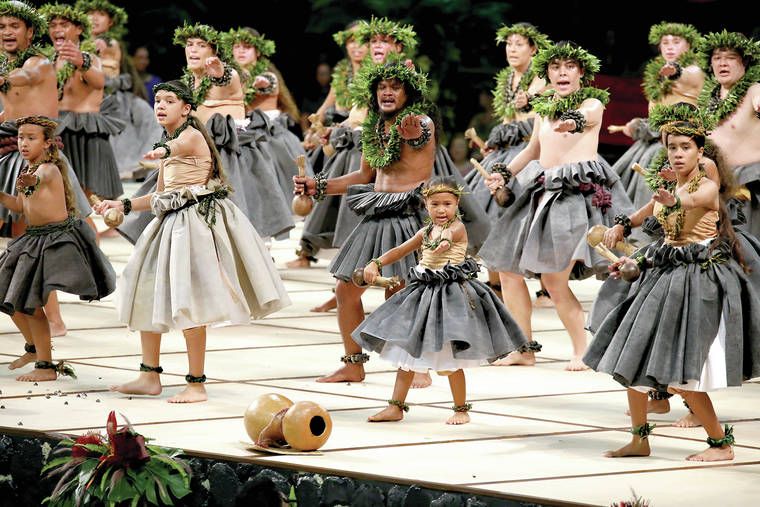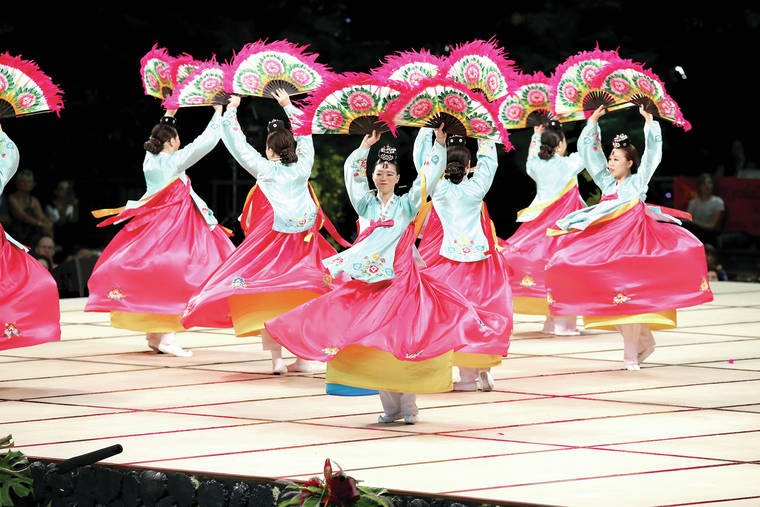The thousands who jammed Hilo’s Edith Kanaka‘ole Multi-Purpose Stadium on Wednesday night for the Merrie Monarch Festival Ho‘ike were treated to a rousing yet thought-provoking celebration of cultural traditions by four dance troupes whose origins span the Pacific Basin.
For the first time ever, traditional Korean folk dance was part of the free Wednesday evening program, which is a precursor to the three nights of competition by 23 halau (schools) described as the “Olympics” or “Super Bowl” of hula.
The Hawai‘i Art and Culture Association of Korea, a Korean hula halau under the direction of Juyeong Kim, joined forces with two traditional Korean dance troupes — The Young Nam Pan Sori Association, under the direction of president Jung Mi Yung, and Arirang Yurangdan, directed by Hyunwoo Moon.
Returning to the Ho‘ike stage were Native Alaskan dancers and Maori dancers from Aotearoa, New Zealand.
Cupiit Yurartet, a well-traveled dance troupe of Cup’ik/Yup’ik members from the southwest region of Alaska — under the direction of Linda Ayagarak-Daney, Maxine Ayagarak-Joseph, Buz Daney, Gregory Teve and Asa Daney — presented several dances, including a particularly poignant piece dedicated to the memories of missing and murdered indigenous women.
Awhina-i-te-kaupapa, under the direction of Kirimaaku Kihi and Rawiri Thompson, made its fifth appearance at Merrie Monarch. The previous four were between 1998 and 2007.
Several of Wednesday night’s performers are children of members of the Maori performing arts group from Huntly, New Zealand, who appeared at Merrie Monarch in 1998 and 2002, according to Leilani Thompson-Kihi, the daughter of Rawiri Thompson.
And, as it has since 1997, Hilo’s Halau O Kekuhi performed under the direction of kumu hula and Merrie Monarch hula competition judge Nalani Kanaka‘ole Zane.
The halau started the evening with what Kanaka‘ole Zane described as an ‘aha mele, or ceremonial chant, that began with Pele and her sister’s attempt to awaken the goddess of fire. According to Kanaka‘ole Zane, her niece, kumu hula Huihui Kanahele Mossman, did most of the research into Halau O Kekuhi’s introductory piece.
“This mele is a recognition of the renewal of a heiau most likely dedicated to Pele,” Kanaka‘ole Zane said in a written description of the performance. “… As traditional knowledge keepers it is crucial that we create accessibility for our people to reconnect with ceremony.”
Kanaka‘ole Zane described the ‘aha mele as “physically taxing because of the footwork.” She described the 13-minute piece as “unprecedented for a hula (that) normally lasts three minutes.”
In the second part of their performance, Halau O Kekuhi featured papa keiki (children) class members and mele from four older students in the ‘olapa (dance) class.
The festival’s three-night hula competition starts at 6 p.m. tonight with 13 women between the ages of 18 and 25, including two from Hawaii Island, vying for the coveted title of Miss Aloha Hula.
Group hula kahiko, or ancient hula, is at 6 p.m. Friday, while group hula ‘auana, or modern hula, followed by the festival’s awards ceremony, begins at 6 p.m. Saturday.











